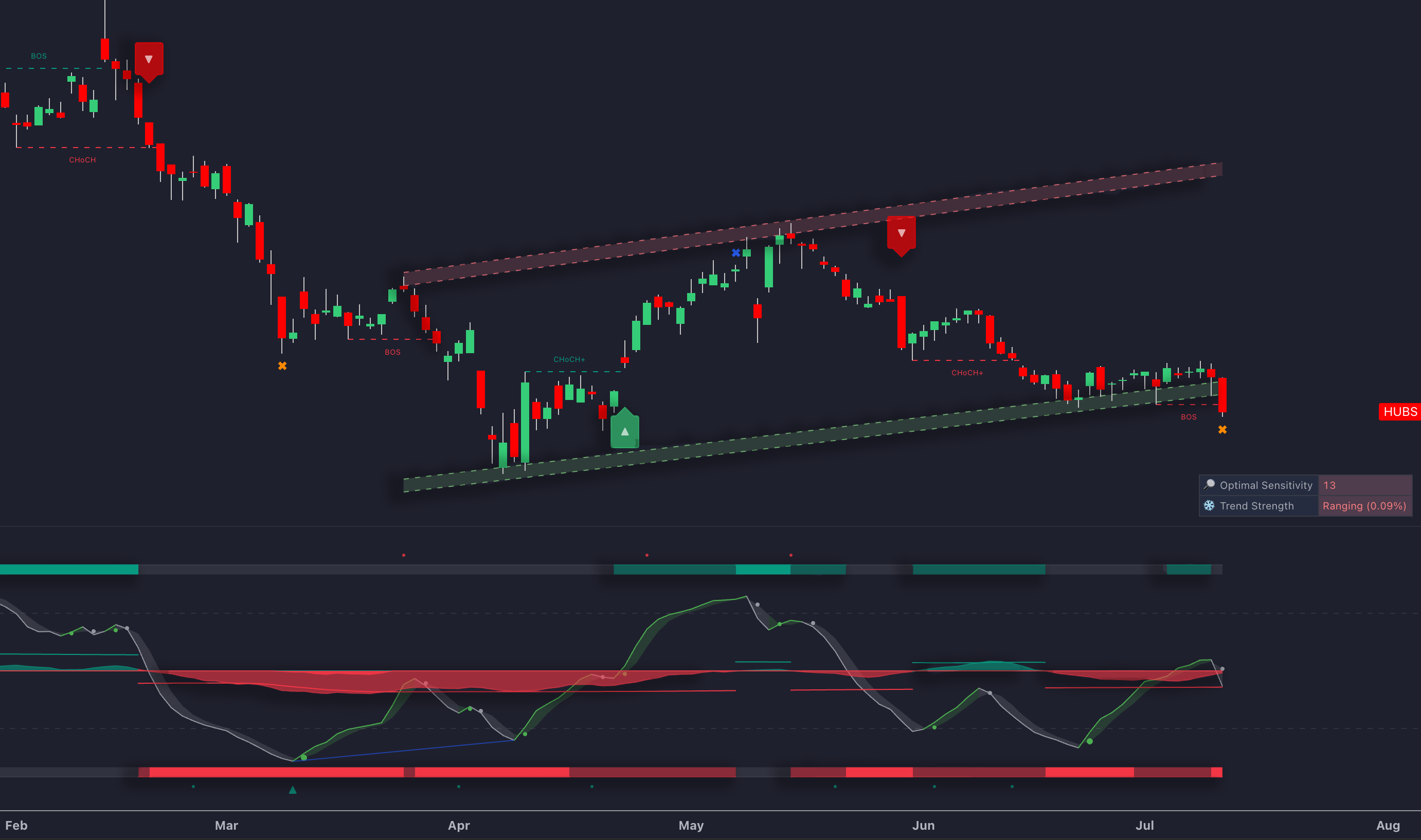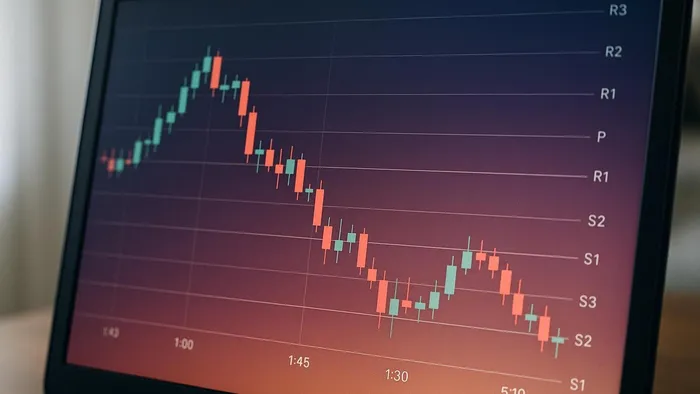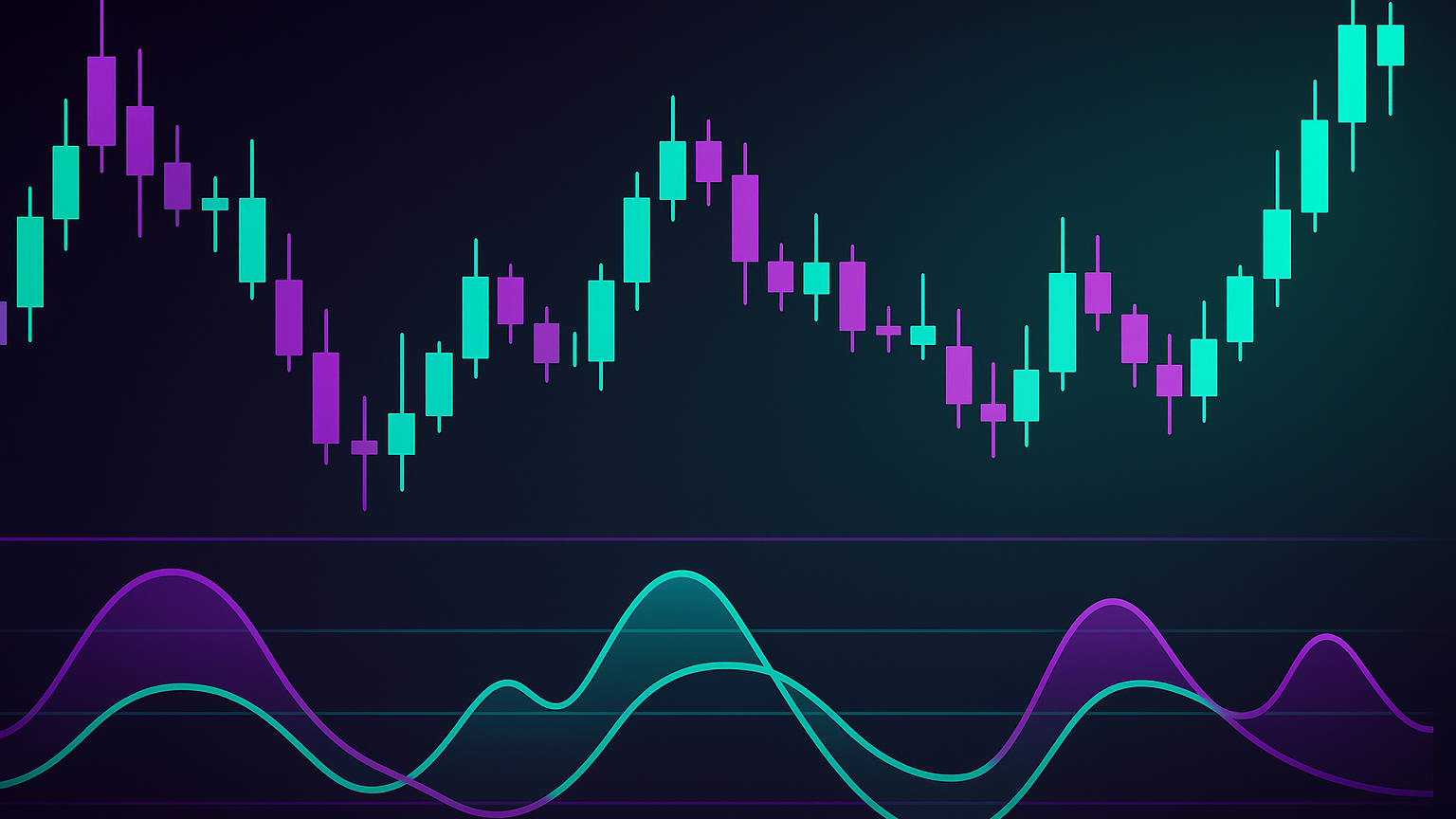Explore a dynamic trading tool that recalculates intraday support and resistance levels in real time, enhancing trading precision.
The Rob Booker Intraday Pivot Points Indicator is a dynamic trading tool designed for short-term traders. Unlike traditional pivot points, it recalculates support and resistance levels in real time during the trading session, offering precise and updated zones for entries, exits, and risk management. Key features include:
- Dynamic Updates: Levels adjust as price changes throughout the session.
- Mist Pivots: Untouched levels that often attract price action later, ideal for scalping.
- Multiple Timeframes: Works on intervals like 1-hour, 4-hour, or 8-hour for tailored strategies (see multi-timeframe analysis).
- Risk Management: Clear guidance on stop-loss and target placement based on pivot levels and market structure.
- Market Sentiment: Tracks bullish or bearish trends relative to the central pivot.
This indicator simplifies decision-making by providing mathematically derived levels for intraday trading and performs best when combined with other concepts such as volume analysis or moving averages (see a primer on moving averages). While effective in most scenarios, it may struggle in high-volatility or low-liquidity conditions. For traders seeking precision in fast-moving markets, it’s a versatile and structured approach.
How to Day Trade with Pivot Points Step by Step
How Rob Booker Intraday Pivot Points Work
The Rob Booker Intraday Pivot Points approach builds on a simple mathematical formula, tweaking traditional pivot calculations to suit shorter trading timeframes. Grasping these mechanics helps traders make better decisions during active trading hours.
Core Calculation Method
This method uses the classic pivot point formula, applying it to intraday data. The central pivot point is calculated based on the previous period's high, low, and close prices:
Pivot Point (PP) = (High + Low + Close) ÷ 3
From this central pivot, the method determines support and resistance levels:
- First Resistance (R1) = (2 × PP) - Low
- First Support (S1) = (2 × PP) - High
- Second Resistance (R2) = PP + (High - Low)
- Second Support (S2) = PP - (High - Low)
- Third Resistance (R3) = High + 2 × (PP - Low)
- Third Support (S3) = Low - 2 × (High - PP)
Unlike daily pivots, these levels are recalculated in real time based on the trader's chosen interval. For example, if trading S&P 500 futures with a 4-hour setting, the levels update dynamically during the session (e.g., 9:30 AM and 1:30 PM EST; see official CME E-mini S&P 500 hours/specs). This real-time adjustment plays a key role in the multi-timeframe analysis explained below.
Multiple Pivot Levels for Intraday Trading
The indicator doesn't stop at a single set of pivot levels. It can generate pivot points for various intraday timeframes, such as 1-hour, 2-hour, 4-hour, or 8-hour intervals. This layered approach provides traders with a detailed map of potential support and resistance zones.
Shorter intervals, like 1-hour pivots, react quickly to price changes, making them ideal for scalping. Meanwhile, longer periods, such as 8-hour pivots, offer more stable levels that are well-suited for intraday swing trades. To make things clearer, different timeframes are visually distinguished on the chart. When pivot levels from different intervals align, these "confluence zones" often indicate stronger potential turning points.
Mist Pivots and Their Trading Applications
One standout feature of Rob Booker's approach is the concept of Mist Pivots.
According to Rob Booker, the "best examples of intraday pivots are the ones that are not hit by price." [1]
Mist Pivots occur when a pivot level remains untouched by any price candle during a given period. These untouched levels frequently act as magnets for future price movements.
Traders often use Mist Pivots to pinpoint entry points for short positions. You can identify them by spotting pivot lines that no candle has touched within a timeframe. These untouched levels often serve as clear targets for both entry and exit strategies.
Their effectiveness increases when combined with other technical signals. For instance, if a Mist Pivot resistance level aligns with bearish divergence or appears as price starts to show exhaustion, it can highlight a high-probability setup. Confirming these signals before acting allows traders to set realistic profit targets using these mathematically derived levels.
Practical Applications in Intraday Trading
Translating theory into action, these strategies use Rob Booker's dynamic pivot calculations to guide intraday trading decisions. These recalculated levels act as a roadmap for navigating the fast-paced trading environment, offering clear reference points for entries, exits, and risk management throughout the session.
Using Pivot Levels for Entries and Exits
Pivot levels provide a structured framework for entering and exiting trades. Traders often take short positions when price rejects resistance levels like R1 or R2 and go long on bounces from support levels such as S1 or S2. The central pivot serves as a psychological dividing line: price above it suggests a bullish bias, while price below it indicates bearish sentiment.
Stop-loss placement is another critical element. For instance, if a trader enters a long position at S1, the stop-loss might be set just below S2. This approach ties risk management to the market's structure rather than arbitrary dollar amounts.
When it comes to exits, pivot levels also offer clarity. A trader going long from support may target the next resistance level, while someone shorting from resistance might aim for the next support level. These predefined targets help establish clear risk-reward ratios, reducing guesswork.
Combining Pivot Points with Other Indicators
To improve decision-making, pivot signals can be confirmed using other technical indicators like volume, moving averages, and momentum tools. For example, if a 50-period moving average aligns with R1 resistance, it reinforces the level as a stronger barrier (learn more about MACD and Bollinger Bands as complementary tools).
Momentum indicators such as RSI or MACD add another layer of confirmation. Oversold RSI readings near a support pivot increase the likelihood of a successful long trade, while overbought conditions at resistance favor short positions (overview of RSI).
Candlestick patterns, like dojis, hammers, or shooting stars, also play a role in confirming reversals at pivot levels. These patterns can act as precise entry triggers when they appear at mathematically significant levels.
However, price action remains crucial. Blindly buying at support or selling at resistance is risky. Instead, traders look for clear rejection signals—like a strong bounce candle at support or a clear reversal structure at resistance—before committing to a trade.
Adapting to Different Timeframes and Trading Styles
The flexibility of pivot points makes them suitable for various trading styles and timeframes. Scalpers often rely on short-interval pivots (1–2 hours) for quick trades, while swing and day traders prefer longer intervals (4–8 hours) to capture broader market moves. Many day traders combine multiple timeframes, using 4-hour pivots for overall bias and 1-hour pivots for precise entries. This layered approach offers both a macro and micro view of the market.
Market conditions also dictate which intervals work best. In trending markets, longer-interval pivots provide better guidance as prices move decisively through shorter-term levels. Meanwhile, in ranging markets, shorter intervals offer more opportunities as prices bounce between nearby support and resistance zones.
The choice of interval can also depend on the asset being traded. Forex markets, which operate 24 hours, often respond well to 4-hour or 8-hour pivots aligned with major trading sessions in London, New York, and Asia. By contrast, stock markets with defined trading hours may require different pivot intervals.
Finally, volatility plays a key role in timeframe selection. High-volatility periods might call for longer intervals to avoid being stopped out by normal market fluctuations, while low-volatility environments may benefit from shorter intervals to capture smaller price movements. This adaptability allows traders to integrate pivot points seamlessly with advanced tools that LuxAlgo provides on TradingView.
Using Rob Booker Intraday Pivot Points with LuxAlgo Tools

LuxAlgo provides powerful TradingView tools that enhance pivot-based strategies. By combining advanced technical capabilities with AI-driven analysis, LuxAlgo helps refine pivot trading strategies, building on the methods previously discussed.
Integration with LuxAlgo's Features
The Price Action Concepts (PAC) toolkit works seamlessly with pivot points by identifying order blocks that align with critical levels. For example, when a pivot support level matches an order block detected by PAC, it creates a high-probability zone for potential reversals. Additionally, the toolkit’s auto-pattern detection can confirm pivot-based setups by spotting structures like double bottoms at support pivots or head-and-shoulders reversals at resistance levels.
Signals & Overlays (S&O) adds another layer of precision by offering signal algorithms that filter pivot point entries. This extra confirmation helps traders make more informed decisions before entering a position.
The Custom Alert Creator simplifies pivot trading by allowing traders to set alerts when prices approach key pivot levels. These alerts can be tailored to trigger under specific conditions, eliminating the need for constant manual monitoring and ensuring timely notifications that align with individual strategies.
LuxAlgo’s screeners further streamline the process by scanning multiple assets simultaneously for pivot-based setups. Instead of sifting through dozens of charts, traders can quickly identify which stocks or forex pairs are nearing significant pivot levels across different timeframes.
In addition to real-time signals, LuxAlgo provides AI-powered tools that refine pivot strategies with detailed analysis.
Using LuxAlgo's AI Backtesting Assistant
The AI Backtesting Assistant simplifies the process of validating pivot point strategies by offering rapid optimization across various tickers and timeframes. It allows traders to test different pivot intervals and configurations without manual number-crunching.
The assistant evaluates how different pivot calculation methods perform under varying market conditions. This data-driven approach reduces guesswork, enabling traders to refine their strategies based on historical performance.
Its optimization engines test combinations of entry, exit, and risk management rules. These insights help traders develop more effective pivot strategies tailored to their objectives.
Additionally, the backtesting platform provides specific guidance on risk management for pivot trading. It can calculate optimal stop-loss distances from pivot levels and suggest favorable target levels based on past data, helping traders fine-tune their approach.
Improving Performance with LuxAlgo's Indicators
LuxAlgo’s real-time alerts and continuously updated tools ensure that pivot strategies remain effective in dynamic markets. The platform notifies traders when price action validates pivot levels, such as through strong rejection candles or breakout patterns, enabling timely decision-making in fast-paced intraday scenarios.
Customization options allow traders to adapt pivot calculations to suit different market conditions. For instance, during low-volatility periods, traders might focus on high and low prices, while in more volatile markets, they can incorporate additional metrics. LuxAlgo’s flexible platform accommodates these adjustments with ease.
The integration with TradingView ensures that pivot levels update automatically throughout the trading session. When combined with other LuxAlgo indicators, traders can create dashboards that provide multiple layers of confirmation for pivot-based trades.
For Ultimate subscribers, weekly scanners and backtests offer insights into how pivot strategies perform across various sectors and conditions. This collaborative approach allows traders to explore new applications and refine their pivot strategies over time.
Advantages and Limitations of Rob Booker Intraday Pivot Points
Key Advantages of Using Intraday Pivot Points
One of the standout benefits of intraday pivot points is their real-time responsiveness. Unlike daily pivot points, this approach recalculates levels throughout the trading session, capturing intraday momentum shifts that static daily pivots often miss. This is especially useful during major market events—like earnings announcements or Federal Reserve meetings—where price action can change dramatically within hours.
Another major plus is the precision in price mapping. The method lays out multiple support and resistance levels at once, giving traders a detailed roadmap of where price reactions might occur. For example, traders focusing on stocks like Apple (AAPL) or Tesla (TSLA) often notice that these levels align well with potential reversal zones, making them reliable guides for decision-making.
The mist pivots feature offers additional entry points that traditional pivot calculations don’t provide—appealing to scalpers and day traders who need pinpoint accuracy.
Finally, the approach’s timeframe flexibility is a big draw. Whether you’re trading quick scalps on a 5-minute chart or looking for intraday swings on a 30-minute chart, the pivot levels adapt seamlessly.
Potential Limitations and Challenges
While the method has many strengths, it can struggle under certain conditions. For example, high volatility can make levels less effective. During extreme market events—like the March 2020 crash or unexpected earnings surprises—prices can blow through multiple pivot levels without respecting them as support or resistance.
Another issue is low liquidity. In thinly traded stocks or during off-hours, pivot levels often fail to hold because there aren’t enough participants to create meaningful support or resistance. This is particularly noticeable in small-cap stocks or during holiday trading sessions.
The approach also relies on historical data, which can lag in strongly trending markets. When prices move in one direction for an extended period, many pivot levels lose relevance. Traders relying solely on pivot points during such trends might find themselves going against the market’s momentum.
Lastly, over-reliance is risky. Pivot levels work best when combined with other tools, such as volume indicators or broader technical/fundamental analysis.
Comparison Table: Strengths and Limitations
| Aspect | Strengths | Limitations | LuxAlgo Enhancement |
|---|---|---|---|
| Market Responsiveness | Updates frequently to capture intraday shifts | May lag in extreme volatility | AI Backtesting Assistant helps test update intervals across regimes |
| Price Level Accuracy | Provides multiple precise support/resistance levels | Struggles in low-liquidity markets | Price Action Concepts toolkit highlights high-probability zones aligned with pivots |
| Trading Opportunities | Mist pivots create additional entry points | Can generate false signals in ranging markets | Signals & Overlays add confirmation filters to reduce false entries |
| Timeframe Flexibility | Adapts to various timeframes | Effectiveness depends on conditions | Custom alerts for specific timeframes and conditions |
| Trend Identification | Identifies potential reversal zones | Struggles during strong trends | Weekly scanners differentiate between trending and ranging markets |
| Risk Management | Offers clear levels for stop-loss placement | Requires pairing with other tools | Optimization engines suggest stop distances based on historical pivot performance |
Conclusion
The Rob Booker Intraday Pivot Points approach offers a clear framework for pinpointing key intraday support and resistance levels. With its real-time recalculations, multiple pivot levels, and mist pivots, it provides day traders and scalpers with actionable entry, exit, and risk-management cues during fast-moving market sessions.
While powerful on its own, the method works even better when paired with other analytical techniques. Combining it with complementary methods strengthens its effectiveness and ensures a more balanced trading approach.
LuxAlgo takes this further by providing the AI Backtesting Assistant for testing strategies, the Price Action Concepts toolkit for identifying high-probability zones, and a Custom Alert Creator for timely updates. Together, these resources enhance the value of pivot-based trading and support disciplined risk management.
FAQs
What makes the Rob Booker Intraday Pivot Points Indicator different from traditional pivot points in how it’s calculated and used?
The Rob Booker Intraday Pivot Points Indicator
The Rob Booker Intraday Pivot Points Indicator is tailored specifically for short-term, intraday trading. Unlike standard pivot points, which rely on the previous day’s high, low, and close prices to estimate support and resistance levels for the following day, this method zeroes in on real-time market activity.
By delivering dynamic, intraday support and resistance levels, this indicator helps traders react swiftly to current price movements. It’s a great choice for those aiming to make quick, well-informed decisions throughout the trading day, rather than depending solely on broader daily trends.
How can traders combine the Rob Booker Intraday Pivot Points Indicator with other tools to improve their intraday trading strategies?
Traders can fine-tune their intraday strategies by pairing the Rob Booker Intraday Pivot Points Indicator with other technical analysis resources alongside foundational concepts like VWAP and order flow. Moving Averages can confirm trend, while oscillators like RSI or MACD help identify overbought/oversold conditions to time entries and exits.
This combination gives traders a broader perspective on market behavior, enabling more precise decision-making. Aligning pivot points with these tools allows for a more refined approach to short-term price movements.
When might the Rob Booker Intraday Pivot Points Indicator be less effective, and how can traders adjust their strategies in such situations?
The method may struggle in highly volatile or strongly trending markets. When prices move quickly, typical S/R levels can become less dependable.
To navigate these conditions, pair pivot points with momentum indicators or moving averages to gauge trend strength. Consider tighter stops or shorter timeframes to manage risk when markets become unpredictable or trend sharply.
References
LuxAlgo Resources
- Pivot Point Profile — Library
- Trending Market Toolkit — Library
- Support & Resistance Levels with Breaks — Library
- Sessions — Library
- Price Action Concepts — Library
- Multi-Timeframe Market Formation — Library
- Stop-Loss/Targets (S&O Backtester) — Docs
- Parallel Pivot Lines — Library
- Pivot High/Low Analysis & Forecast — Library
- Risk-Reward Ratio vs Win Rate — Blog
- Volumetric Toolkit — Library
- Adaptive Momentum Oscillator — Library
- Candlestick Structure — Library
- Breakout Detector (Previous MTF High/Low) — Library
- AI Backtesting Assistant — Platform
External Resources
- What Are Pivot Points? — Investopedia
- E-mini S&P 500 Hours & Specs — CME Group
- Moving Average Basics — Investopedia
- MACD Overview — Investopedia
- Bollinger Bands — Investopedia
- Relative Strength Index (RSI) — Investopedia
- Trading Sessions Explained — Investopedia
- Rob Booker Intraday Pivot Points — TradingView Support
- Federal Reserve — Official Site
- Tesla — Official Site








